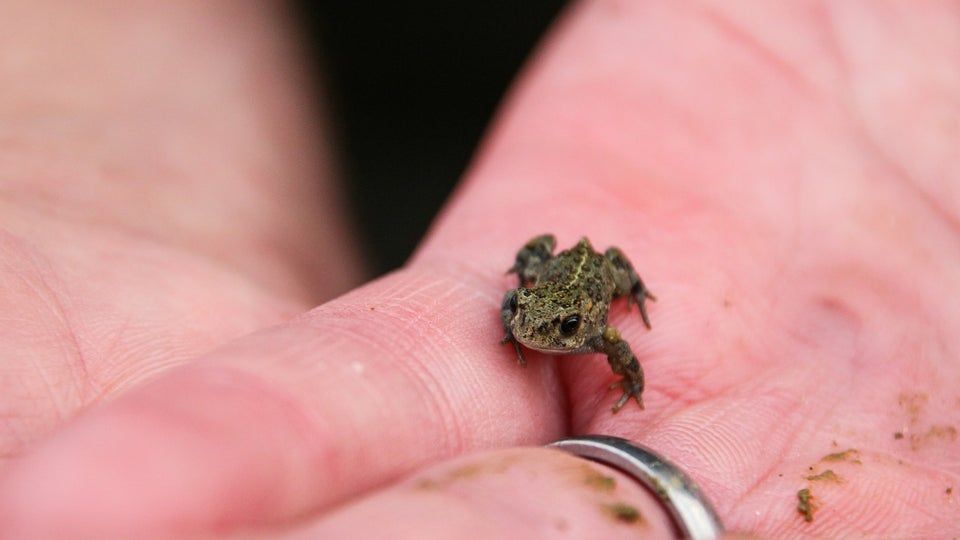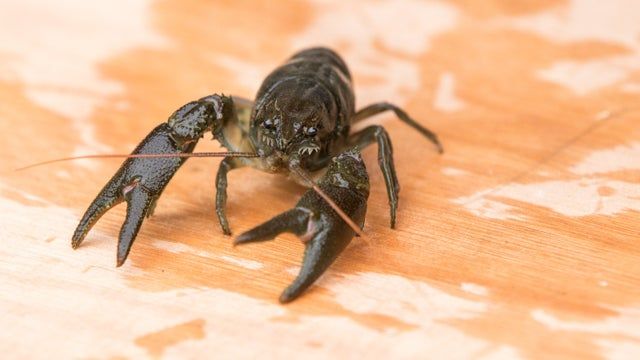The National Trust helps wildlife
The National Trust cares for over 780 miles of coastline, 250,000 hectares of land, and over 500 historic houses, castles, parks and gardens. Many of these places are homes to wildlife and the Trust cares for them to help wildlife survive and thrive. Examples of the work they are doing can be found in Merseyside and Northumberland, where very rare species will benefit from the Trust's care.
Sand dunes to become a refuge for wildlife,
Particularly vital for natterjack toad
The sand dunes at Formby in Merseyside were once used to dump waste tobacco. It was tipped there by a tobacco company between the 1950s and 1970s. Nettles thrived on the site, leaving little room for anything else, most especially the natterjack toad or native plants and reptiles.
 The natterjack toad will benefit from the work being done at Formby sand dunes
The natterjack toad will benefit from the work being done at Formby sand dunes
So now the two hectare site is being transformed into a haven for rare wildlife, including the natterjack toad. Wedges of sand are being excavated to create new dunes and this will give the toads the best chance to survive and to thrive. Toads and lizards need to be able to move across the site and they need places to hunt, bask, hibernate and (in the case of lizards) to lay eggs
As well as tackling the habitat, Trust staff are creating 12 breeding pools for the natterjack toads. Find out more about the project here.
White-clawed crayfish get a fresh chance of survival
This endangered species is having a refuge created at the Wallington Estate in Northumberland. The Trust will take up to 100 crustaceans from a river to an old cattle drinking hole. which has been made into an isolated, self-contained area,
The species is so endangered that there is a very real risk it could become extinct. White-clawed crayfish are the only native freshwater crayfish in the UK. They are listed as endangered on the ICUN Red List and are a European Protected Species.
This is mainly because of the American signal crayfish and that species spread disease and take over food and habitat. Back in the 1970s, the American signal crayfish was introduced as a delicacy in restaurants.

White-clawed crayfish have a fresh chance of survival in Northumberland
So the hope is that by moving the crayfish to this “ark” area where they are isolated, they will breed. Building up the populations of this species needs to be done quickly so that they don’t vanish. And the crayfish there can in theory help repopulate other waterbodies.
The public will be able to see the crayfish as there will be a display tank in the reception area, and talks and activities are planned to educate people about them and how you and I can help. The disease these crayfish can get can be carried on boots, dog paws and fishing equipment – it can actually survive on wet and muddy items for about 3 weeks.
Willow trees have been planted alongside the river bank to help crayfish thrive as the tree roots provide a home for them.
The National Trust is doing a lot of work to help wildlife; find out more here. You can also support their work by becoming a member.
Why not plant a tree?

Help the National Trust achieve their ambition to establish 20 million trees by 2030
The Trust wants to establish 20 million trees by 2030. You can help by planting a tree with them for just £5 – you’ll get a certificate to commemorate your gift. £50 will plant 10 saplings. This will help tackle climate change, make homes for wildlife and give future generations of people and animals more green spaces. You could also dedicate a tree in memory of someone special. Find out more here